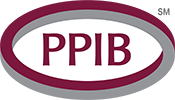Written by: Susan Preston
Prior to the Procedure – the Initial Interview:
- Discuss any issues the client has with the procedure, including their fears. If at all possible, get some idea on what is going on in their lives as to major events that might make them living on the edge financially or emotionally.
- Have them fill out the medical history form. Review it with them. Advise them of any medical problems that could complicate the procedure. If you are at all unsure about them, either turn them down or have them bring in a doctor’s release.
- Determine if the client has any chronic problems for which they are seeing a doctor. If so, have them get their doctor’s written permission to get the procedure, or ask them to return at a later date when the situation is resolved.
- Review the consent form with them and have them sign it. Give them a copy of the form which they have signed. There must be a consent form on file or coverage will be denied for medical services.
- Give them your pre-procedure and aftercare form.
- Treat everyone in the same professional manner. If you ever plan to set up a demonstration of your service, any model must still sign a consent form. Do not work on anyone that will not sign your consent.
The following are signs a client could present a problem for you in the future. DO NOT TAKE THE CLIENT IF ANY OF THE FOLLOWING OCCUR:
- They won’t sign the consent.
- They exhibit highly nervous or irrational behavior.
- They have chronic health problems or take medications such as anti-depressants with which you are uncomfortable and their doctor will not give them permission to get the work done from you.
After the procedure while they are still with you
- Review the aftercare form instructions and give them any products they may need.
- Advise them you are always available to answer questions and concerns.
- Set a follow up appointment if they have purchased a series of treatments.
- Complete your client notes. Every client file must have client notes, completed medical history/client information forms and the signed consent.
Problems after the procedure
- Do not ignore complaints or concerns. Always get back to clients immediately if they call or write you.
- If you feel the problem could lead to a complaint or a future claim, you must tell your insurance broker about it as soon as possible. Way too many claims are denied when the spa professional knew about a potential problem and did not disclose it on their renewal application or in a timely manner.
- If there were any problems or concerns during the procedure, call the client the next day to see how they are doing.
- If their appointment was less than 4 weeks ago and they are concerned about burning of their skin or some other skin issue, advise them to sit tight until at least 4 weeks has passed. If they are concerned about anything else, set up an immediate appointment.
- Any time the client comes in to see you for any situation, take notes and document the file.
- If the client is unhappy with the work you have done and demands a refund, work with them. It is best to assume a policy in any business of wanting a satisfied customer, so you will have to determine if their issue has merit. If you need help with issuing a refund, contact your broker.
- It is best not to admit any liability, but always be as pleasant as possible to the client. Say something like “You will take the situation under advisement” or “… under review.”
- If your client develops a condition as a result of your work, suggest they get a medical evaluation or have the supervising doctor look at them.
- If you get a letter from a lawyer, don’t panic. Send the letter with all your file information, including client notes, medical history, and consent forms to your insurance broker. If you do not have insurance, you may need to hire a lawyer to help you resolve the situation.
- If you get a summons, email all client information to your insurance broker, including your client notes, medical history and signed consent forms. The summons will need to be responded to in less than 30 days or a judgment automatically could be rendered against you. If you do not have insurance, you will have to hire a lawyer immediately.
To run a successful business, avoid working on people who may cause problems in the future -trust your “gut” if you don’t feel right about a person.
To avoid problems or claims denials, advise your insurance broker when you have a potential problem client. And be absolutely sure all clients sign a consent. Consider having them sign a new consent form about once every 6-12 months.
DO NOT PANIC if you do make a mistake or have an unhappy client. The longer you are in business, the better chance there is that something may go wrong. If you work with an insurance broker who has been in the industry a long time, they should be able to help you handle the situation
